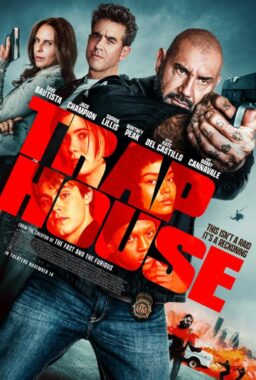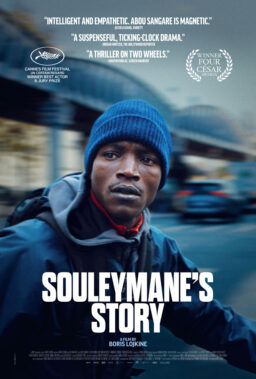For what it’s worth, Irwin Allen’s production of “The Towering Inferno” (1974), represents the pinnacle of the Disaster Film genre, a series of movie extravaganzas that spanned from one end of the 1970s to the other, starting with the multi-Academy Award nominated “Airport” (1970) and ending with duds that all but killed the genre for good (Allen’s own “The Swarm” (1978) and “The Concorde…Airport ’79”). “Towering” was such a large production that it required two directors (Allen & John Guillermin), two source novels (“The Tower” & “The Glass Inferno”) and two studios to come to life. Personally, I prefer the more colorful “The Poseidon Adventure” (nothing tops Shelley Winter’s death scene!) but “Towering” is clearly the biggest and most ambitious of this particular bunch.
Disaster entries were the ultimate formula movies. Their plots could always be summarized in a sentence of just a few standard components and their screenplays were later written around them: “A…..
a) vessel/edifice/tropical paradise…
b) crashes/capsizes/catches fire/explodes…
c) during/at/in…
d) New Year’s Eve/Inaugural Flight/the Bermuda Triangle/Opening Night.”
The roles in them were like musical chairs for some of Hollywood’s biggest names and they were eerily similar from one entry to the other, no matter the nature of the catastrophe. Paul Newman and Faye Dunaway in “Towering” were basically playing the heroic pilot and self-sacrificing stewardess from any of the “Airport” movies. There wasn’t much of a difference between the opening party guests here, “a list of luminaries that reads like a who’s who, leaders of society and government, stars of the screen of television!” and “the collection of the rich and the beautiful” aboard the 747 in “Airport 77.” Their protagonists’ personal dilemmas were remarkably akin as well: people at a crossroads in their lives, the requisite children in peril (who you always knew were in no real risk), the colorful character who suddenly bursts into a inspiring ballad (in the tradition of the Helen Reddy nun and the blind man from the “Airports”), the guy who finds true love for the first time in his life only to lose it soon after, and so on. These common traits are the reason why any time you remember a character from any one of these pictures, it always takes a moment to place them in the right one.

“The Towering Inferno” deals with opening night at the world’s tallest skyscraper, where faulty wiring short-circuits, releasing an unstoppable force in the form of a fire that threatens the guests at the opening party on one of the top floors. The cast (individually boxed in the movie poster while screaming) includes the heroism of larger-than-life Fire Chief Mike O’Hallorhan (Steve McQueen) & architect Doug Roberts (Paul Newman), the crisis leadership of no-nonsense security guard Harry Jerningan (O.J. Simpson) & greedy builder James Duncan (William Holden), the unending cowardice and treachery of the latter’s son-in-law Roger Simmons (Richard Chamberlain), doomed young couples in love (Robert Wagner and Susan Flannery), doomed old couples in love (Fred Astaire and Jennifer Jones) and a large assortment of the usual Disaster Film characters.
The main reason why “Towering” does work is that, unlike the entries in the recent revival of the genre, its characters are well-defined and played with utter conviction, allowing the audience to feel some concern about who will make it out alive and who won’t; the most enjoyable part about watching a movie of this sort. This is not to say that they are particularly deep or three-dimensional (actually they often come off as more than a bit pretentious) but at least it’s easy to think back and remember what each one of them was about, something that’s impossible in movies as recent as 2006’s “Poseidon“, where I can recall there being three dark-haired women among the escapees but good luck telling each one from the others. We also have the protagonists in the later revival of the genre by Roland Emmerich who are usually loud and colorful (think Randy Quaid in “Independence Day” and Woody Harrelson in “2012”) but their over-the-top reactions to cataclysmic events made little sense and made it hard to identify with them.
Back in the day, Disaster Films had no equal when it came to displaying the latest trends of their generation (not unlike the latest incarnation of “The Amazing Spiderman,” who can be seen texting on his iPhone while saving the world) but like everything and anything from the 1970s, those in “Towering” now appear laughably dated and that makes for half the fun of watching a movie like this today. Think of the (then) latest in music-playing technology as represented by the Martian-antennas radio used by Mike Lookinland of “Brady Bunch” fame, the building’s super-sophisticated computers with blinking lights that probably didn’t serve much of a practical purpose, some of the tackiest fads in movie history like the interior design of “The Glass Tower,” and a selection of tuxedos of the most unexpected colors.

As 1970s Disaster Films went, “The Towering Inferno” had some of the most solid production values. Surely, there’s no shortage of hokey dialogue (Fred Astaire: “Do you believe in destiny?” Jennifer Jones: “I believe in all good things!”) but this is not just a guilty pleasure. All of Allen’s works had a great sense of enthusiasm in them and you could easily tell that every penny in the budget was put on the screen. “Towering” has an aerial introduction in San Francisco with a terrific John Williams score in the background; it has heartfelt performances by legends Newman and McQueen in their prime, as well as one of the greatest casts in memory. It may come from pre-CGI times but every visual trick available was used, including models of such height and weight that their credibility was never in question. There’s no substitute for the real water and fire used here, something that if done later with CGI would have likely called too much attention to itself (think of the artificial water seen in recent examples such as “2012” or “Noah“).
Watching “Towering” today, it’s curious how more slowly paced it is when compared to current action entries, though I don’t see this necessarily as a flaw. If the movie does tend to feel a bit long and slow at times, this has more to do with the screenplay conveying every angle of its numerous characters and their individual stories, some more interesting than others. It also has a good deal of illogical scenes like the idea of storing all of the building’s water in tanks located on the highest floor, which would mean that if you turn the water of a first floor faucet, it would first have to travel 138 floors up and 138 floors down. There’s also the unexplainable sights of fires sprouting below and above but not on the same floor where the party is taking place and that of a helicopter carrying Steve McQueen to the top of an external elevator without its blades smashing the building’s facade. Then there all those explosives set to ignite at a specific time but blowing-up gradually instead just so that we may appreciate each character’s reaction (a sequence paid homage in the near fall into the garbage compactor by the “Toy Story 3” protagonists). This is the same concept used in movies like “Independence Day” (1996) where the aliens are supposed to attack at a precise time but only do so progressively so that we are able witness the destruction of each individual landmark, a fake but valuable cinematic approach.

“The Towering Inferno” received one of those Oscar nominations for Best Picture that, much like that for “The Fugitive” (1993) still brings out the unavoidable “really?!” whenever the subject comes up. There are even lesser films in this group for sure, but it’s hard to grasp that fellow 1974 nominees such as “The Godfather Part II”, “Chinatown ” and “The Conversation” actually have something in common with “The Towering Inferno”.
In one of its DVD documentaries we see Irwin Allen excitingly discussing plans for future projects like “Beyond the Poseidon Adventure” (1979) and “When Time Stood Still” (1980), which proved that: a) there are only so many spectacular ways for people to die on screen and b) the genre was doomed before its most iconic promoter even realized it. In a time period when big-budget productions were few and far apart (a fraction of just the comic book movies we get these days), there were indeed a few worthy examples that show why, for a while, the toughest ticket in town was when a Disaster Film was playing.












